If Lisbon is one of those places lower on your list of “must see in Europe,” re-think your rankings. Portugal’s capital city is a lively urban center chock full of attractions from medieval to modern. Whether you’re a history buff, a gastronome, a power shopper, or all three, you’ll find plenty to see, taste, and buy in this surprising city near the sea.
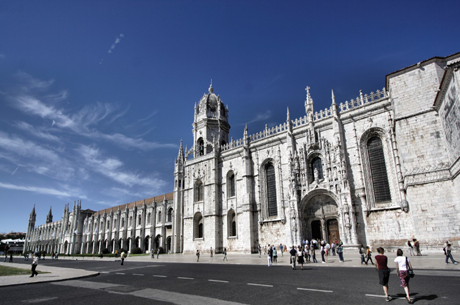 Lisbon sprawls over seven hills, from the peak where the Castle of St. George towers over the metropolis, down to the shores of the Tagus River that flows into the Atlantic Ocean ten miles away. The hillsides are steep, the streets winding, and the traffic dense, so it’s best to explore on foot (wear comfortable walking shoes). For longer distances, use the excellent public transportation system of modern subways, comfortable buses, and historic little wooden trams that clatter through the oldest parts of town.
Lisbon sprawls over seven hills, from the peak where the Castle of St. George towers over the metropolis, down to the shores of the Tagus River that flows into the Atlantic Ocean ten miles away. The hillsides are steep, the streets winding, and the traffic dense, so it’s best to explore on foot (wear comfortable walking shoes). For longer distances, use the excellent public transportation system of modern subways, comfortable buses, and historic little wooden trams that clatter through the oldest parts of town.
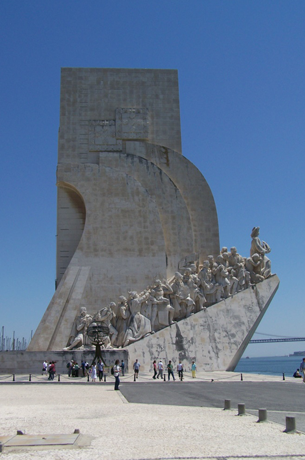
There’s so much to see in Lisbon that the most efficient way to explore the city is a section at a time, visiting the different districts each with their own character. Another approach is to focus on a particular theme of interest to you, and head for those spots that appeal to you the most. For example, anyone interested in interior design should visit the Museum of Decorative Arts, with its fine collection of furniture, textiles, ceramics, and silver, housed in a handsome 17th-century palace in the Alfama district. Next stop, a bit farther afield: the National Tile Museum, a 16th-century convent and church now converted into a showcase for historic hand-painted ceramic tile panels, one of Portugal’s most outstanding crafts, with examples from the Moorish era to the present. Then head for Lisbon’s new design museum, MUDE, in the Baixa district, for its quirky collection of 20th-century iconic artifacts, from fashion to furniture and more. Finally, return to the Alfama district for the colorful “Thieves Market,” a flea market held on Tuesday and Saturday mornings where you can purchase decorative items, old and new, for your abode.
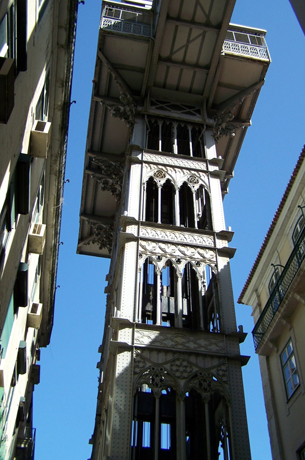
Shoppers will enjoy strolling through the Baixa commercial district, with its mixture of old and new stores selling everything from shoes to souvenirs to salt cod. Rest your feet by stopping for coffee and pastries at the Confeitaria Nacional, which has been serving sweets since 1829, or indulge in excellent gelato at Fragoleto. Just across the street from the main train station near Rossio Square, the Restaurante Leão d’Ouro, built in 1842, serves good traditional Portuguese food, at reasonable prices, in a delightful dining room with walls covered in beautiful blue and white ceramic tiles.
From the Baixa district, take the multi-story neo-Gothic outdoor elevator up to the Bairro Alto district. The Chiado section of this district attracts many of Lisbon’s artists, intellectuals, and young sophisticates. It’s also a magnet for shoppers, with one of a kind boutiques, tiny art galleries, dusty antiquarian book stores, funky craft shops, and cozy cafes. You can purchase Portuguese handmade products, traditional and modern, at several attractive little stores in Chiado, including A Vida Portuguesa, Artes & Etc., and Atelier 55. When you’re tired of shopping, stop for a freshly made juice drink or coffee (eight different kinds) at Quiosque de Refresco, the little kiosk in Camoes Square; or sip a foaming beer at Cervejaria Trindade, the oldest brewery in Portugal; or perk up with an espresso at A Brasileira, one of the city’s most famous old coffeehouses, decorated in Art Nouveau style.
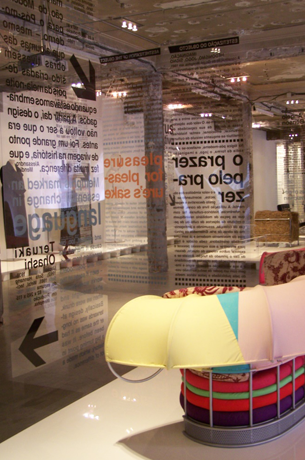
Board a tram for a ride along the coast to the Belém district of Lisbon, where you’ll find the magnificent Hieronymite Monastery, built in the early 16th century with money made from the spice trade, soon after Vasco da Gama returned from his voyage around the southern tip of Africa to the pepper markets of India. Nearby, at the entrance to Lisbon’s harbor, is the impressive Belém Tower, constructed in a similar style in 1520-1521. Both buildings are now UNESCO World Heritage Sites. And along the same waterfront is the more modern Monument to the Discoveries, commemorating the Portuguese seafarers who found new ocean routes to Asia in the 1400s and 1500s.
Belém has many other attractions, too, including the Maritime Museum, the National Archeological Museum, the Belém and Ajuda Palaces, the Belém Cultural Center, and several pleasant parks. Be sure to taste one of the famous custard tarts, pastéis de Belém, at the Antiga Confeitaria de Belém just a block from the monastery, which has been making these little pastries since 1837. Farther along the same street, other small pastry shops sell their own special sweet tarts, one made with beer, another with fresh cheese and ground almonds. You can easily spend an entire day visiting the sights in Belém, but avoid Mondays when many of the museums are closed.
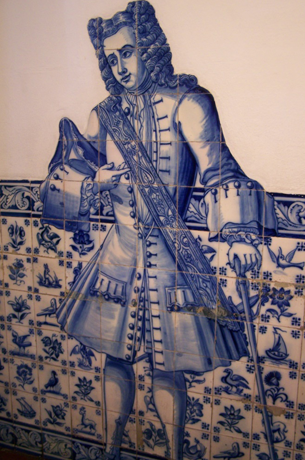
To see a more modern side of Lisbon, head to the Park of Nations area, which was developed in a former industrial part of the city along the shore of the Tagus River estuary in the 1990’s for the Expo ’98 World’s Fair. The ultra-modern Lisbon Oceanarium, one of the largest in the world, is definitely worth a visit. Other attractions include the Atlantic Pavilion Concert Hall, the Marina, the Vasco da Gama shopping mall, the promenade, the cable cars over the river, many trendy restaurants and bars, and several green parks.
Finally, don’t miss the Calouste Gulbenkian Museum, one of the world’s greatest “small museums,” with its excellent collection of fine art and decorative art from the Far East, the Near East, and Europe, spanning the period from antiquity to the mid-20th century. Then cap your stay in Lisbon with a visit to the Fado Museum, to learn about the history of this unique form of Portuguese “soul music,” before heading off to a late-night performance at one of Lisbon’s tiny fado clubs.
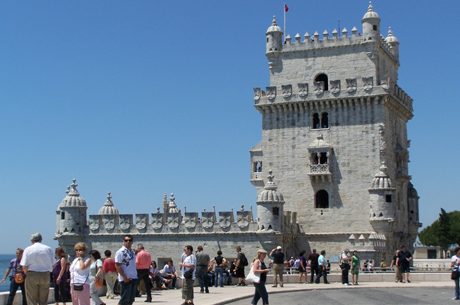
Where to Stay:
Sheraton Lisboa Hotel & Spa – Built in 1973 and totally refurbished in 2006, the Sheraton is the tallest building in Lisbon. Conveniently located close to a subway line, the hotel has 369 modern rooms in three price categories; if you book a “Club”-category room, you’ll also have access to the Club Lounge on the 24th floor, with free internet, fresh coffee, international newspapers, and a quiet place to enjoy breakfast, with breathtaking views over the city and harbor. Rua Latino Coelho 1, tel. 351-21-312-0000, www.sheraton.com/lisboa.
Olissippo Lapa Palace – Live like a lord in this lovely 19th century villa surrounded by formal gardens, which has been turned into one of the world’s top class hotels. Dine on Mediterranean food at the Lapa Restaurant, relax in the sauna, pool, or Turkish bath, and end the day with a drink at the hotel’s Rio Tejo Bar. 4 Rua do Pau de Bandeira, tel. 351-21-394-9494, www.lapapalacelisbon.com.
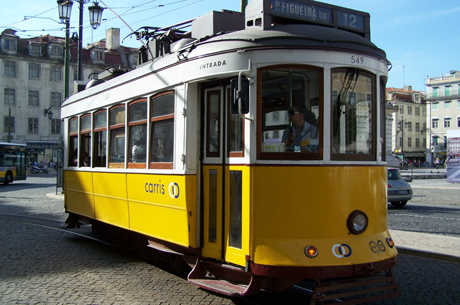
Altis Belém Hotel & Spa – This trendy, ultra-modern “design hotel” adjacent to Lisbon’s marina features 50 sleekly furnished rooms, the highly rated Feitoria Restaurant & Wine Bar, plus a cafeteria, an oyster and sushi bar, and another popular bar with a large terrace where you can sip drinks while looking at the river. Doca do Bom Sucesso, tel. 351-210-400-200, www.altisbelemhotel.com.
Where to Eat & Drink
Restaurante Largo – Located inside part of an old convent in the Chiado district, the Largo features a back-lighted alabaster bar at the entrance and coolly modern decor that contrasts nicely with the brick vaulted ceiling of the old building. Chef Miguel Castro Silva has a refreshingly no nonsense attitude toward cooking: he prepares good, honest food, with an emphasis on traditional Portuguese dishes updated for today’s tastes and artistically plated, but never pretentious. Largo offers good value, too, with prix-fixe menus for only 18 and 29 euros. Rua Serpa Pinto 10-A, tel. 351-21-347-7225, http://www.largo.pt/en/.
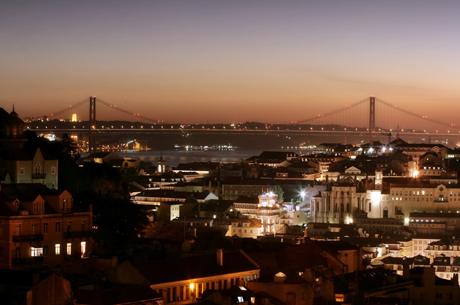
Bocca – One of Lisbon’s top young chefs, Alexandre Silva, succeeds in presenting ultra-modern dishes, made with seasonal ingredients and arranged like miniature works of art, in this intimate, friendly little restaurant that has garnered rave reviews. Prix-fixe multi-course menus, with an option of matching wines included, are the best way to taste a range of this chef’s innovative cuisine. Rua Rodrigo da Fonseca 87-D, tel. 351-21-380-8383, http://bocca.pt/en/.
Restaurante Panorama – Located on the top floor of the tall Sheraton Hotel tower, the Panorama lives up to its name, with stunning views of the city. The five course “Temptation Menu,” with matching wines, showcases Chef Leonel Pereira’s specialties, which include fish and meat dishes that combine traditional ingredients with modern techniques. Rua Latino Coelho 1, tel. 351-21-312-0000, www.sheraton.com/lisboa.
Restaurante Leão d’Ouro – For simple, well prepared, traditional Portuguese dishes (especially fresh seafood), at very reasonable prices, head to this blue-and-white-tiled restaurant dating from 1842, just across from the main train station. Rua 1 de Decembro 105, tel. 351-21-342-6195, http://www.restauranteleaodouro.com.pt/.
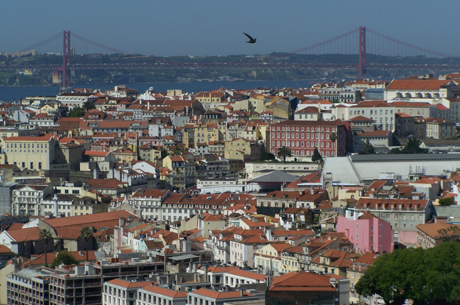
*Useful Info: Buy the Lisboa Card for 24, 48, or 72 hours of travel on Lisbon’s excellent public transportation system, plus free or discounted admission to most of Lisbon’s museums and other main attractions (http://www.askmelisboa.com/en/catalog/lisboa-card-0).

